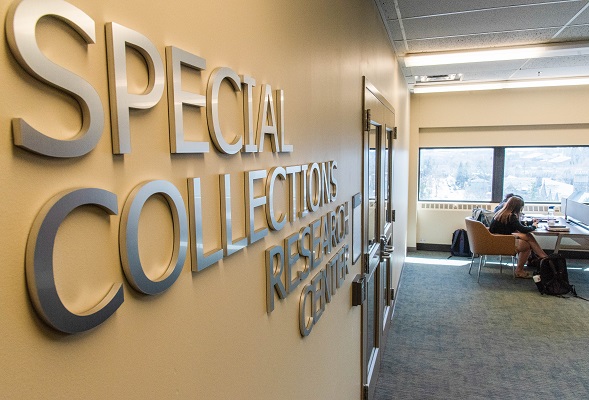According to his obituary, Rowland M. Myers was born in Brooklyn in 1907, and received his bachelor's degree from Dartmouth College in 1928. He earned a Ph.D. in Romance Languages and Literature from Johns Hopkins University in 1931, then taught Romance Languages at Union College and the University of Texas before World War II. During the war, he served in "Army intelligence," but the exact nature of his service is not known. In 1946, his mailing address was for the Internal Affairs and Communication Division of the OMGUS (Office of Military Government, United States), the office governing the U.S. controlled sections of Germany at the close of World War II.
During and after World War II, the University of Michigan mounted an effort to document the war's history, and soldiers were encouraged to donate materials to what was named the "University War Collection." According to F. Clever Bald, the University War Historian, writing in 1946: "The response of alumni to requests for printed materials relating to the war has surpassed all expectations. A veritable avalanche of books, leaflets, newspapers, broadsides, posters, and other important documents poured into the office of the War Historian from all the fighting fronts. More than 5,000 books and thousands of newspapers and other items have been received."[1]
In 1943 Lt. Rowland M. Myers, who had apparently attended the Judge Advocate General's School at the University of Michigan for a summer, began shipping (via government freight) crates of German books, newspapers, and pamphlets to the University. Many fo the books were incorporated directly into the general collection with a bookplate attributing Myers as the donor. The pamphlets were later placed in the University's Department of Rare Books and Special Collections (now the Special Collections Library), where they were merged with similar materials, including the 1960 purchase of the Ludendorff collection of approximately 400 books and pamphlets.
Although it is not mentioned in any correspondence, Myers also sold to the University five linear feet of documents and publications apparently seized from a local office of the Nazi party in Eisenach, Germany. Little attention was paid to these materials until 1959, when Gerhard L. Weinberg joined the faculty. Weinberg had served as a research analyst for the War Documentation Project at Columbia University and as the director of the American Historical Association Project for Microfilming Capture German Documents. Weinberg pulled out the archives from the materials sent by Myers, creating a brief inventory entitled "German Archival Material in the Rare Book Room" where he described them thus: "There are the files of Hermann Köhler, the Kreisleiter der NSDAP, Kreis Eisenach. Included is correspondence, notes, incoming and outgoing mimeographed circulars, special and secret publications from Köhler's files, and albums of photographs."
